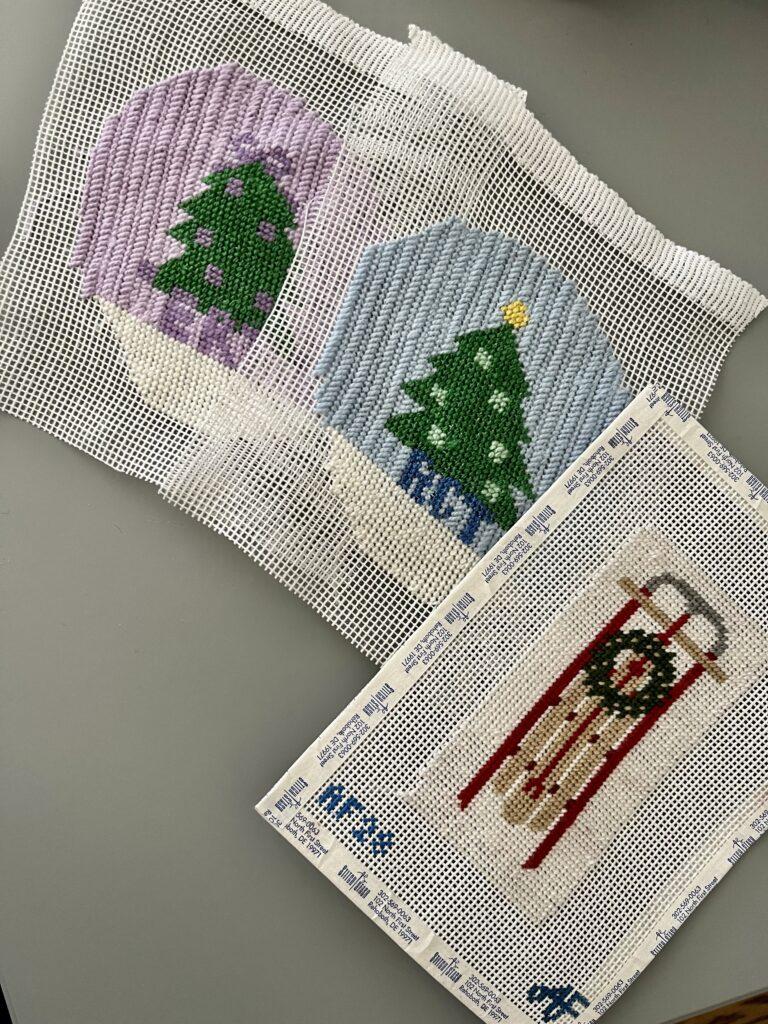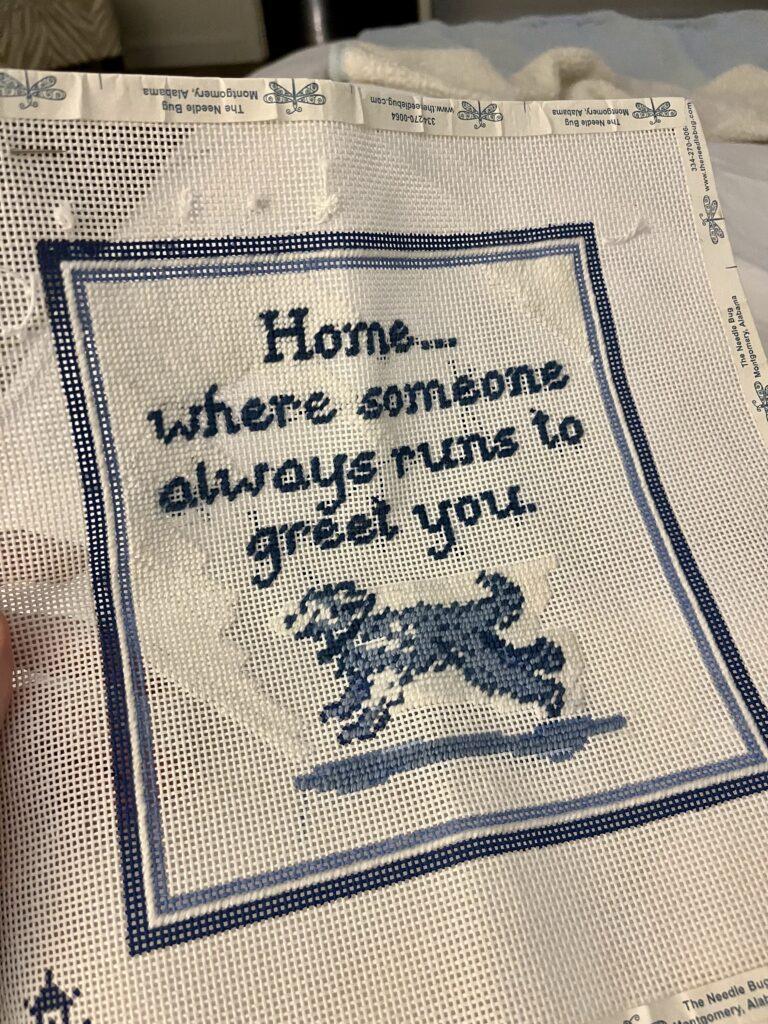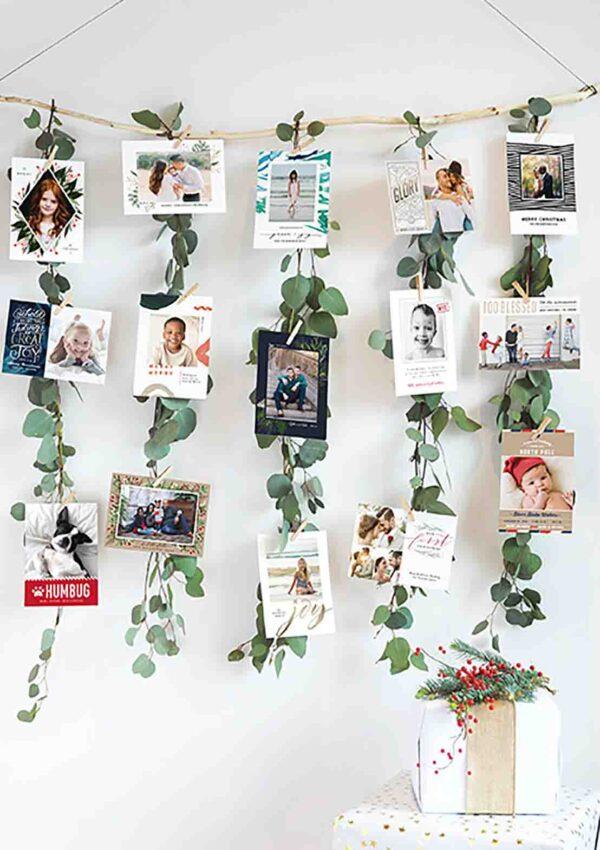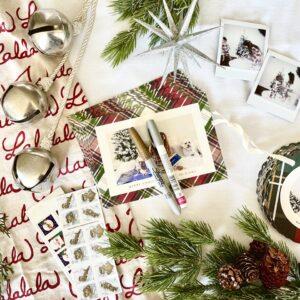When I first picked up this new hobby, it was during the pandemic when I needed something else to do. It’s wonderful for someone who always needs to be doing something with their hands! The cool thing about needlepoint is that you can either get a canvas, which is basically a pre-printed (painted, mostly) blueprint of what to stitch; or you can create your own!
Beginning Needlepointing: How to get Started with Needlepoint
My first project was an ornament I purchased from a needle point shop. I did the most basic stitch, and it came out pretty great. Then I looked and looked for Christmas ornament canvases but couldn’t find anything I loved – so I painted them myself. (I just ordered blank canvas and went from there.) Also, I love how they came out! I did one for each of my kids.
Then I started on a much larger project, which I plan to frame for the house. I started it last year in December, but I don’t pick it up every day – or even every week. I’m determined to finish this one in the next few months, so I’ve been bringing it with us on long car trips to stitch while my husband drives.

What you need to get started needlepointing
First, a canvas! There are so many places to find them, and you can go for something very vintage-looking or something modern like a Veuve bottle. One of my favorite places to window shop for canvases is on Etsy. There are numbers associated with each canvas, which correspond to the number of squares per square inch. A 13 canvas will have larger holes than an 18 canvas, also called an 18 mesh. Larger holes means fewer holes which means it takes less time to stitch.
Needles will be very important! I recommend going with embroidery needles so that the “eye” of the needle is large enough for your threads. Size 20 or 22 should work well if you’re working with size 13 or 18 mesh, which are the most popular sizes.
Fibers aka threads: When you’re starting out, I highly recommend asking the shop where you purchase your canvas if they can “kit” it for you, which means to include enough of the fibers you’ll need to finish stitching it. I have done this online a few times, and it’s worked out well for me.
Sharp scissors for cutting your threads cleanly. I bought this scissor set on Amazon and keep one in my bedside table and one in my project bag.
Seam ripper for those times when you mess up a stitch and need to rip it out after the fact. I have this one and it’s great.
Needle threader to help maintain your sanity as you’ll be threading a needle quite often! Mine has a light on it, which I love.
How to actually get started with a project
There are a TON of great resources online. I joined a Facebook group called NDLPT Nation, and any time I have a question I’ll post in there and get a bunch of helpful responses.
Start with a YouTube video showing the Continental Stitch, which is the most basic and cleanest looking stitch for beginners.
This free beginners PDF will come in handy with a few different stitches.
Find a few accounts on Instagram that you like for inspiration, if you’re going to want to try more complicated stitches. I started by following some of my favorite needle point shops and then found other stitchers from there!
If you didn’t get a kit and aren’t sure what thread to use, this chart is helpful. Threads come in different sizes of thickness. Something too thick for a canvas won’t look right, and thread that is too thin for a canvas will show more of the hole space.
Where to find needlepoint canvases
Some of my favorite needlepoint shops for canvases:
- I usually go right to Needlepoint.com because they have a very wide selection of canvases!
- The Plum Stitchery
- Penny Linn Designs for anything grandmillennial or Nantucket
- Kirk & Bradley for travel-themed ornaments

What do you do when you’re done stitching a project
When I start a new canvas, I usually already know what I’m going to do with it. Otherwise you’ll end up with a bunch of stitched canvases that sit around! The actual finishing part is probably the most expensive piece (though to be honest, canvases can be pretty pricey too because many are hand-painted). You can ask at your local needlepoint shop what they recommend. Or you can YouTube it and do the finishing yourself!
I have an ornament that I plan to self-finish, so we’ll see how that goes. There are a bunch of things you can do with canvases. Ornaments are probably the most popular, as well as pillows, wall-hangings, and Christmas stockings. (I love the idea of stitching stockings for each of my kids, but I’ve heard they are a BEAST of a project to do.)
Have you tried to needlepoint yet?





Leave a Reply